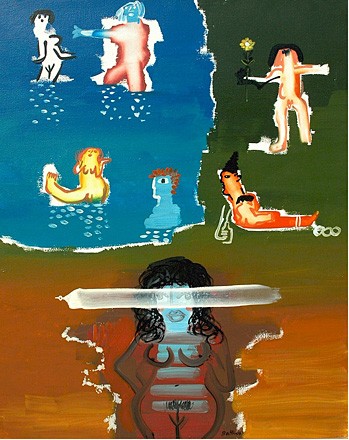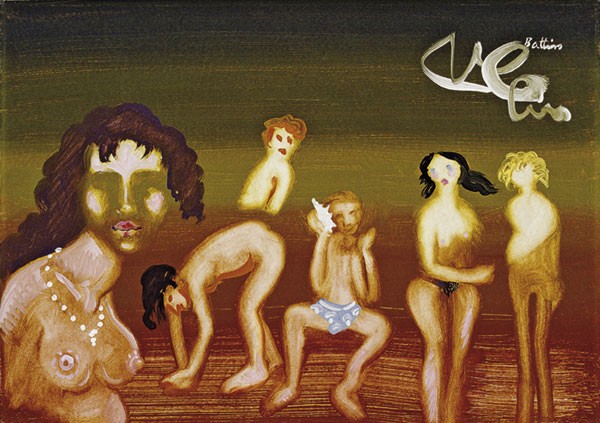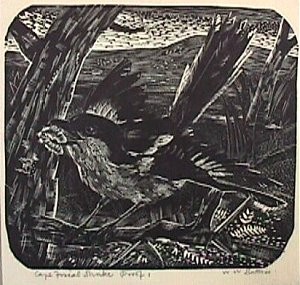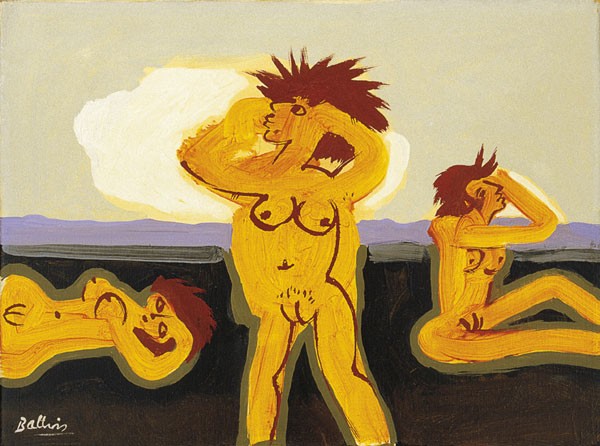Walter Wahl Battiss (1906-1982)
Get a Walter Wahl Battiss (1906-1982) Certificate of Authenticity for your painting (COA) for your Walter Wahl Battiss (1906-1982) drawing.
For all your Walter Wahl Battiss (1906-1982) artworks you need a Certificate of Authenticity (COA) in order to sell, to insure or to donate for a tax deduction.
Getting a Walter Wahl Battiss (1906-1982) Certificate of Authenticity (COA) is easy. Just send us photos and dimensions and tell us what you know about the origin or history of your Walter Wahl Battiss (1906-1982) painting or drawing.
If you want to sell your Walter Wahl Battiss (1906-1982) painting or drawing use our selling services. We offer Walter Wahl Battiss (1906-1982) selling help, selling advice, private treaty sales and full brokerage.
We have been authenticating Walter Wahl Battiss (1906-1982) and issuing certificates of authenticity since 2002. We are recognized Walter Wahl Battiss (1906-1982) experts and Walter Wahl Battiss (1906-1982) certified appraisers. We issue COAs and appraisals for all Walter Wahl Battiss (1906-1982) artworks.
Our Walter Wahl Battiss (1906-1982) paintings and drawings authentications are accepted and respected worldwide.
Each COA is backed by in-depth research and analysis authentication reports.
The Walter Wahl Battiss (1906-1982) certificates of authenticity we issue are based on solid, reliable and fully referenced art investigations, authentication research, analytical work and forensic studies.
We are available to examine your Walter Wahl Battiss (1906-1982) painting or drawing anywhere in the world.
You will generally receive your certificates of authenticity and authentication report within two weeks. Some complicated cases with difficult to research Walter Wahl Battiss (1906-1982) paintings or drawings take longer.
Our clients include Walter Wahl Battiss (1906-1982) collectors, investors, tax authorities, insurance adjusters, appraisers, valuers, auctioneers, Federal agencies and many law firms.
We perform Walter Wahl Battiss art authentication, appraisal, certificates of authenticity (COA), analysis, research, scientific tests, full art authentications. We will help you sell your Walter Wahl Battiss or we will sell it for you.

Walter Battiss was a South African artist, generally considered the foremost South African abstract painter and known as the creator of the quirky “Fook Island” concept.

Born into English Methodist family in the Karoo town of Somerset East, Battiss first became interested in archaeology and primitive art as a young boy after moving to Koffiefontein in 1917. In 1919 the Battiss family settled in Fauresmith where he completed his education, matriculating in 1923. In 1924 he became a clerk in the Magistrates Court in Rustenburg. His formal art studies started in 1929 at the Witwatersrand Technical College (drawing and painting), followed by the Johannesburg Training College (a Teacher’s Diploma) and etching lessons. Battiss continued his studies while working as a magistrate’s clerk, and finally obtained his Bachelor’s Degree in Fine Arts at University of South Africa at the age of 35.

Battiss was a founding member of the New Group and was unique in that he had not studied overseas. In 1938 he visited Europe for the first time, and in 1939 he published his first book, “The Amazing Bushman”. His interest in primitive rock art had a very profound impact on his ideas and he regarded San painting as an important art form. He was also influenced by Ndebele beadwork, pre-Islamic cultures and calligraphy.

In a 1949 trip to Europe he befriended Picasso who would have an influence on his already quirky style. He visited Greece in 1966-1968 and the Seychelles in 1972, which inspired his make-believe Fook Island.

Battiss published nine books, wrote many articles and founded the periodical “De Arte”. He taught Pretoria Boys High School students for 30 years at the Pretoria Art Centre, of which was the principle from 1953-58. He also taught at UNISA where he became Professor of Fine Art in 1964 and retired in 1971. In 1973 he was awarded a D. Litt et Phil (honoris causa) from UNISA.

In 1981 he donated all his work to the newly opened “Walter Battiss Museum” in his birthplace of Somerset East.Walter Battiss died in Port Shepstone, KwaZulu-Natal of a heart attack on 20 August 1982.

Walter Battiss’ long career as an artist has been devoted to the study of man in his environment; first in the context of Africa and rock art, then, later, in the interpretation of this concept in its broadest sense. His versatility and influence as in innovator, and the incentive he has provided for many aspiring artists, have secured him a very special place among leading South African artists. Walter Battiss was a legendary figure – to such an extent that Professor Neville Dubow of the Michaelis School of Art, University of Cape Town, once remarked that had Battiss not existed, we would have had to invent him!

Battiss’s weird and wonderful appearance, his colorful and eccentric persona, his insatiable curiosity about life, and his remarkable work ethic, continue to challenge intellectual exploration of his work and capture the imagination of art lovers both at home and abroad.

This “island of the imagination” was a materialization of Battiss’ philosophy for which he created a map, imaginary people, plants, animals, a history as well as a stamps, currency, passports and driver’s licences. He created a Fookian language with a full alphabet as well. This utopian ‘island’ was a composite of the many islands he visited – which included Zanzibar, the Seychelles, Madagascar, Fiji, Hawaii, Samoa, the Greek Isles and the Comores – blended together in his customary imaginative fashion. In Battiss’s words, “It is something that does not exist. I thought that I would take an island – the island that is inside all of us. I would turn this island into a real thing … I would give it a name”.

Fook was a result of his fertile imagination as well as his opposition to the Conceptualist Art movement of the 1960’s and 70’s, in Europe and America. The movement espoused that the construction of art was confined to the ‘moment’ in which it was created. He believed on the contrary that all art exists in the now and this he argued to represent with Fook Island, which was always in the now and always an essential part of reality. South Africans such as actress Janet Suzman, artist (and Battiss protegé) Norman Catherine, writer Esmé Berman and many others embraced the philosophy of Fook Island. Battiss’ Fookian Driver’s License was accepted in America and the colorful pages of his Fookian Passport has official stamps from Australia, Britain and Germany. A Fookian banknote was also exchanged at a Rome airport for $10!

Reviews
1,217 global ratings
5 Star
4 Star
3 Star
2 Star
1 Star
Your evaluation is very important to us. Thank you.
